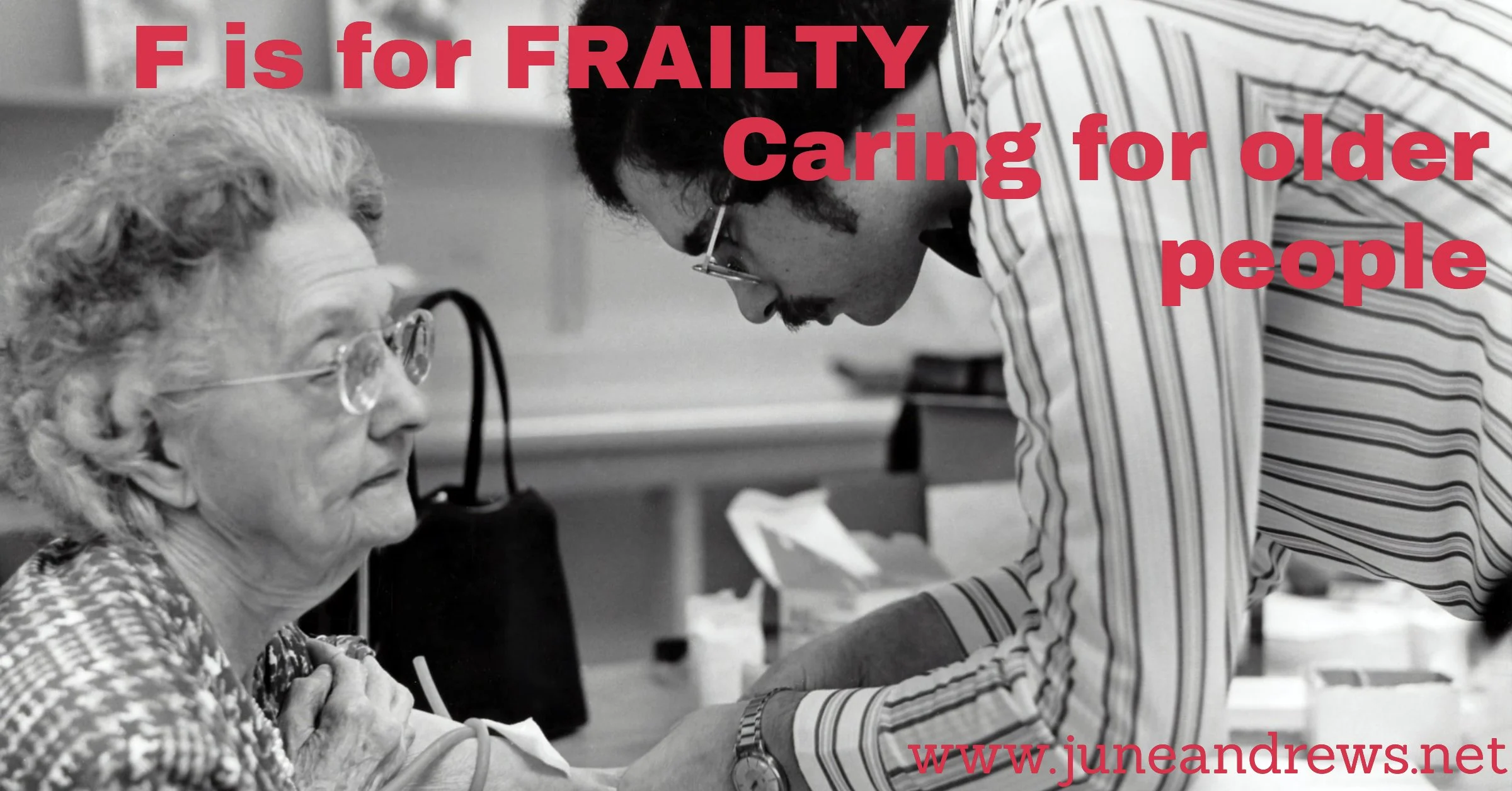Frailty
In the run up to publication of my new book Carers and Caring; the One Stop Guide; how to care for older relatives and friends I am sharing an A-Z of some of the practical solutions learned from research and experience. If you think any problems have been missed you can email me and tell me, and I’ll make sure they are covered in the next edition and online on my website at www.juneandrews.net.
F is for Frailty
The word frailty is used a lot about older people. When you say that someone looks frail, it usually means that they look weak and delicate. In fact, the current guidance from the National Institute for Clinical Excellence (NICE) says that whenever an older person goes to hospital, doctors should identify frailty and grade it. It is not an illness but a combination of natural ageing, loss of fitness and, for some, the effects of several long-term conditions. The person is often tired, with unintended weight loss and reduced strength. Their ability to get over an illness or injury is greatly reduced, so a minor incident can reduce the quality or length of their life. That means they might not benefit from some major interventions like cardiac resuscitation. Because of that a frail person may decide that they do not want doctors to attempt resuscitation if they collapse. This is often referred to as a DNR or DNAR order (Do Not Attempt Resuscitation). Best practice requires that such orders are discussed with the family. The discussion should be kept up to date.
The NHS has a specialised clinical frailty network and there are tips on their site to help clinicians work out how to help people.
The assessment, which in hospitals is often done using the Rockwood Clinical Frailty Scale, is not about how they are when they are admitted to hospital, but about how the person is normally. The aim in hospital is to get them back to that previous state. It is important to let the staff know how this person was two weeks ago. That should be the baseline. Professor Kenneth Rockwood is a world-leading Canadian doctor in this field, and he talks about the difference between an 80-year-old who can run a marathon and another 80-year-old who cannot get out of bed. He points out that as humans we have evolved higher-level functions. This includes walking upright, being able to exercise vigorously and having divided attention. He says, ‘When those things fail, we can’t think properly, we can’t function properly, we can’t move properly, we are at risk of falls.’ You can find this scale easily on the internet and spot which level the older person you care for is currently at. Clinicians need an understanding of the person - can they think, do they feel happy, do they engage with others etc as a way of understanding their health. Prof Rockwood describes this as a problem in modern healthcare - not knowing on how to focus on the whole person. Not at an emotional level, but at a biochemical and biological level, recognising what happens in ageing people.
It is not a natural consequence of ageing. It has been described as the intersection of age-related decline with chronic diseases and conditions.
Three hints:
1. Frailty is common but varies a lot
2. Know your person’s level of frailty and tell the clinicians
3. Realise that frailty sometimes leads to poorer outcomes, and be prepared

